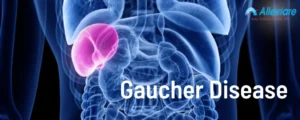Role of Expanded Access Programs (EAPs) in the Drug Development Process
Introduction:
Expanded Access Programs (EAPs) offer patients access to investigational drugs outside of clinical trials. These programs benefit individuals suffering from cancer or rare diseases who have no other treatment options available. EAPs can be established at various stages of the drug development process, either concurrently with clinical trials or after their completion.
EAPs During Clinical Trials:
Pharmaceutical companies often choose to provide an EAP alongside active phase 2 or 3 clinical trials. This approach allows patients who are unable to enroll in the study to access the investigational drug. Companies may initiate EAPs during this stage out of compassion to assist desperate patients with limited treatment alternatives. Additionally, providing Expanded access during clinical trials allows physicians in key markets to gain experience with the product before it is commercially available. This firsthand experience can lead to increased support and advocacy for the drug’s approval and subsequent utilization in the market.
Running an EAP alongside clinical trials also enables companies to collect nonclinical data from patients enrolled in the program. While the primary objective of an EAP is to provide treatment, companies may choose to collect basic information from patients to supplement clinical trial data during the product approval process. This real-world data (RWD) can generate real-world evidence (RWE) and provide valuable insights into the drug’s performance outside the controlled clinical setting, contributing to its eventual commercial availability.
EAPs After Clinical Trials:
Alternatively, companies may establish an EAP after the completion of clinical trials. This allows continued treatment access for patients while they await the product’s commercial availability. For companies that do not require extensive clinical data from follow-on studies, an EAP can serve as a cost-effective alternative to an Open Label Extension (OLEX) Study. Implementing an EAP at this stage reduces the complexity, time, and resources typically associated with OLEX Studies.
Compared to clinical trials, the setup process for an EAP is less complex and time-consuming. Sponsors can initiate the program by submitting individual patient requests to regulatory bodies, such as the FDA, and later transition to cohort applications as more patients are enrolled. The familiarity of regulatory bodies with the program streamlines the process. Furthermore, EAPs do not require the same level of rigorous monitoring, extensive data collection, and reporting as clinical trials. This reduced burden leads to lower costs and simplified procedures, making EAPs an attractive alternative to OLEX Studies. Sponsors also have greater flexibility in setting the inclusion and exclusion criteria for an EAP, allowing them to provide the drug to all trial patients, a subset of trial patients, and even patients previously excluded from the original clinical trials.
Conclusion:
Expanded Access Programs play a crucial role in the drug development process, offering patients with limited treatment options access to investigational drugs. EAPs can be established concurrently with clinical trials or after their completion, providing compassionate care and real-world data collection opportunities. By understanding how EAPs can fit into the drug development process, pharmaceutical companies can effectively meet the needs of patients and contribute to the advancement of medical research and patient care.





